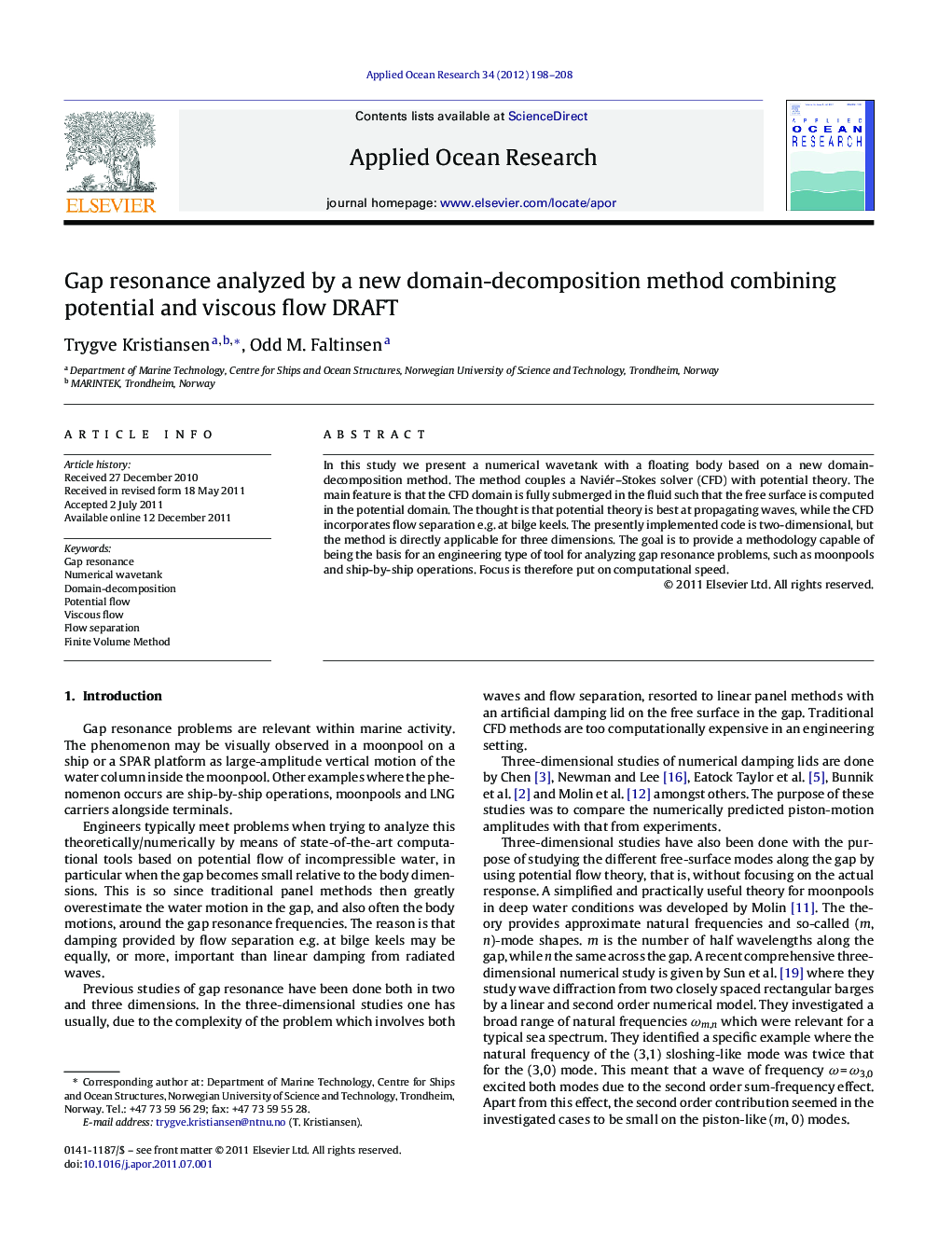| Article ID | Journal | Published Year | Pages | File Type |
|---|---|---|---|---|
| 1720289 | Applied Ocean Research | 2012 | 11 Pages |
In this study we present a numerical wavetank with a floating body based on a new domain-decomposition method. The method couples a Naviér–Stokes solver (CFD) with potential theory. The main feature is that the CFD domain is fully submerged in the fluid such that the free surface is computed in the potential domain. The thought is that potential theory is best at propagating waves, while the CFD incorporates flow separation e.g. at bilge keels. The presently implemented code is two-dimensional, but the method is directly applicable for three dimensions. The goal is to provide a methodology capable of being the basis for an engineering type of tool for analyzing gap resonance problems, such as moonpools and ship-by-ship operations. Focus is therefore put on computational speed.
